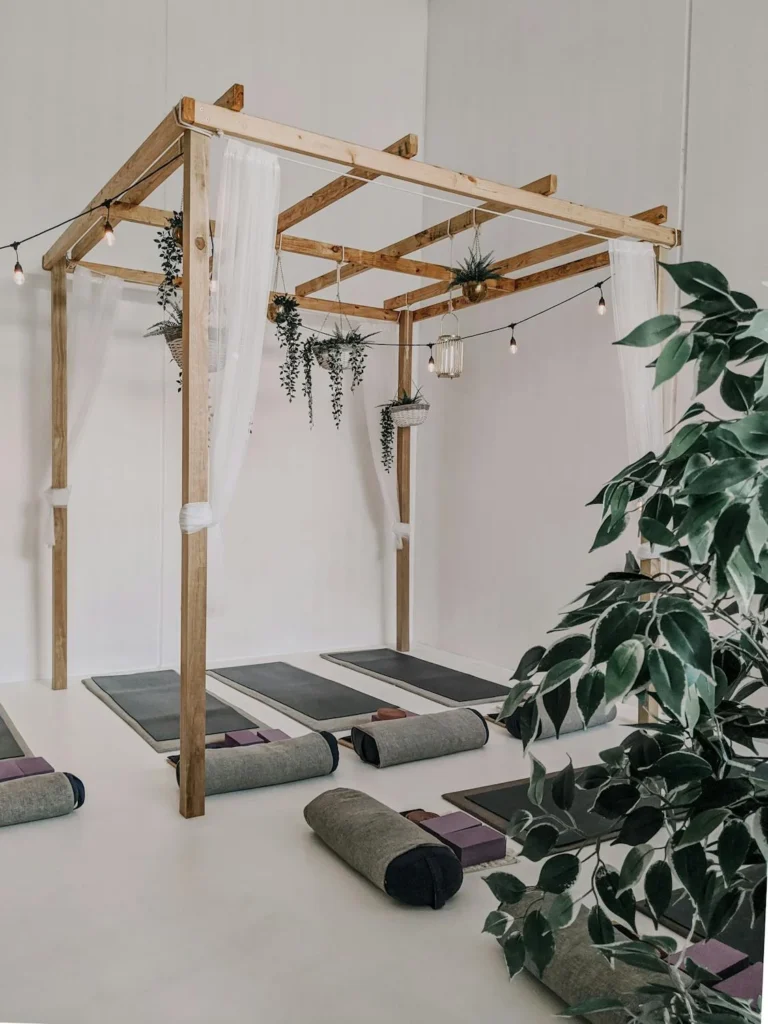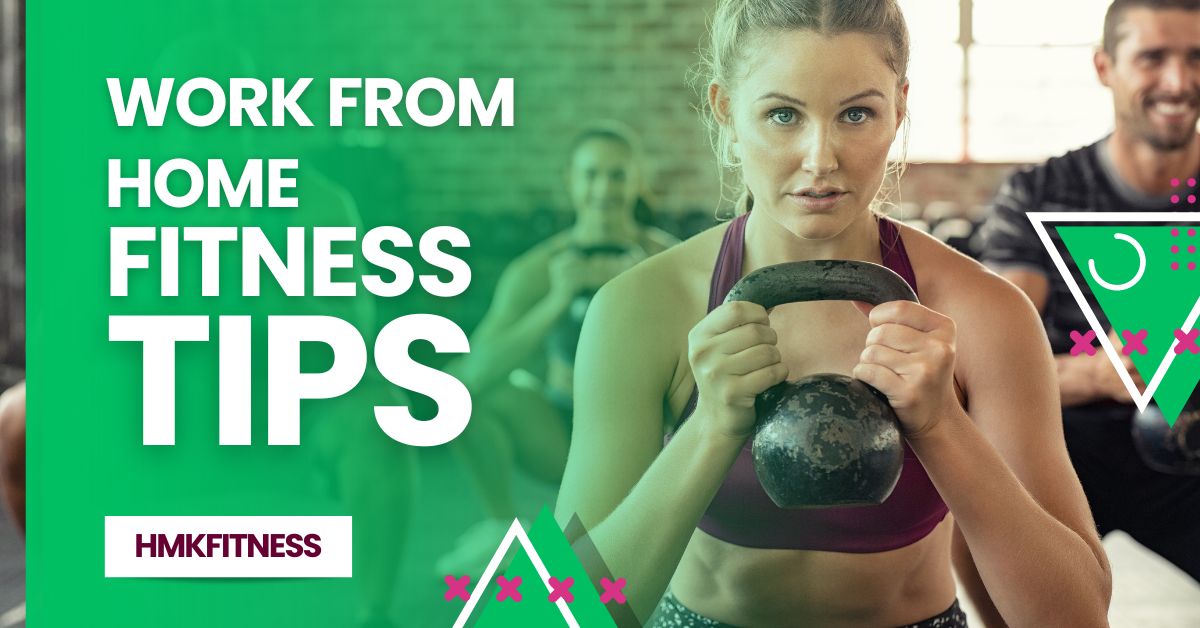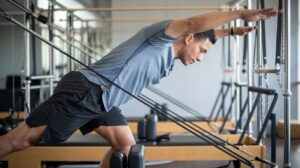Table of Contents
ToggleIntroduction:
In this blog post, learn about work from home fitness tips. Home-based work is now a major state of affairs, in which you can relish the pros and face the cons. Despite the fact that long-wireless-waving technologies enable us to communicate and save time, the inherent trade-off is that we need to catch up on our phones by being less active at home. Rolling out of bed, Tuesdays and Thursdays are her days to run before she logs in for work, raising consumer issues, or even taking official meetings, to mention some cases.
Importance of Staying Fit While Working from Home:
Working from home might sound like a dream come true, but it also presents unique challenges to staying active. Without the daily commute, walking to meetings, or taking breaks with colleagues, it’s easy to fall into a sedentary lifestyle. Staying fit isn’t just about looking good; it’s about feeling good, staying healthy, and maintaining high productivity levels. Let’s dive into why staying fit is crucial when working from home and how it benefits you beyond the physical aspect.
Health Benefits:
One of the biggest advantages of an active way of life is its effect on overall health. Regular physical activity may aid your immune system, protect you from chronic diseases, and promote cardiac well-being. Exercise is also an essential part of stress control, and many people do exercises at home when they work remotely. Physical activity produces endorphins, called the “feel-good” hormones, which are able to elevate your mood and combat any feelings of isolation or burnout that can arise from your remote work.
Moreover, by staying active, we often activate our mental faculties. Thus, we can accomplish our goals; that is, we can stay focused and attentive during working hours. Exercise improves brain blood flow, so people can be more attentive, make better decisions, and be more productive.
Combating Sedentary Lifestyle:
Working from home often means sitting for extended periods, which can lead to poor posture, back pain, and even long-term health issues such as obesity and heart disease. It’s not uncommon for people to spend eight or more hours a day seated at their desks, making it essential to counteract this inactivity.
Simple changes can make a big difference. Incorporating short bursts of movement into your day, like stretching or a quick walk around the house, can help break up prolonged sitting periods. Standing desks or adjustable workstations can also be a great investment, encouraging you to stand more frequently and maintain better posture.
Focusing on exercises that strengthen your core, back, and shoulders can mitigate the impact of sitting all day. Activities like yoga or pilates are excellent choices for improving flexibility and building muscle strength, helping to counteract the negative effects of a sedentary work-from-home lifestyle.
Creating a Home Workout Routine:
It is very important to have a workout plan that can easily fit into your schedule of working from home if you want to stay healthy and active. Home workouts, on the other hand, can be done at any time. Thus, you have more flexibility; however, they also need self-discipline and an action plan. Let’s start by looking at how you can easily include exercise in your daily schedule and some brilliant exercises that can be done without any equipment.
Finding Time for Fitness:
One of the biggest hurdles to maintaining a workout routine at home is finding the time to do it. When work and home life blend, it’s easy for your fitness goals to take a back seat. However, with a bit of planning, you can carve out time for exercise without feeling overwhelmed.
Start by scheduling your workouts just as you would any other important task or meeting. Whether it’s a 20-minute session in the morning, a quick midday workout, or an evening stretch, blocking out time on your calendar helps you stay committed. Morning workouts can set a positive tone for the day, while evening sessions can serve as a great way to unwind after a busy day.
It’s also beneficial to break your workouts into smaller, manageable chunks throughout the day. For example, you could do a quick 10-minute HIIT session before breakfast, five minutes during your lunch break, and a short yoga session before bed. This approach makes fitness less daunting and easier to fit into a busy schedule.
Effective Home Exercises:
Creating an effective home workout can be something other than a gym membership or expensive equipment. Bodyweight exercises can be just as effective and can be adapted to fit any fitness level. Here are some tried-and-true exercises that you can easily incorporate into your routine:

Squats: Great for strengthening your legs and glutes, squats can be done anywhere and can be modified by adding weights or trying different variations like jump squats or sumo squats.
Push-ups: A classic upper-body workout that targets the chest, shoulders, and triceps. Modify them by doing knee push-ups if you’re starting, or elevate your feet for an added challenge.
Planks: Perfect for core strengthening, planks help improve posture and balance. Try different variations like side planks or forearm planks to keep things interesting.
Lunges: Lunges work your lower body muscles and can be done in place or as walking lunges if you have space. Add weights or try reverse lunges to switch it up.
Jumping Jacks and Burpees: These full-body exercises are excellent for cardio and can help get your heart rate up quickly. They’re great for short bursts of intense activity.
Yoga and Stretching: Incorporating yoga and stretching into your routine not only improves flexibility but also helps with relaxation and stress relief.
For a balanced routine, aim to combine strength training with cardio and flexibility exercises. Apps and online fitness classes can provide guided workouts tailored to your needs, keeping you motivated and engaged.
Setting Up a Home Fitness Space:
Establishing a certain area for working out can greatly increase your motivation and consistency with the workout. A large space or expensive equipment is not needed at all; even a small and unused part of the room can be the place where you begin your journey to being fit. In this way, you can have an efficient and distraction-free workout, and therefore, it will aid in you achieving your fitness goals, which will transform exercise from a tedious task into a joyful event in your day.


Choosing the Right Space:
One of the things to do to set up a home gym is to determine where the right place in your home is. The best-case scenario is that it is a place that has enough space for you to be able to move around and do exercises that require room to stretch out. Think about places with natural light, as a sunny setting can nourish your mood and energy. In the event that the actual physical space is at a premium, windows that take up most of the wall could offer additional light as well as an additional escape and resting area.
The flooring should be constructed in a way that provides safety and is also comfortable for working out. A yoga mat is a great option, or try interlocking foam mats, which can give the needed protection and make floor exercises easier on your joints. A mat, in general, is a must-have for floor exercises, but it becomes even more important when you are on a hard surface as it not only helps to prevent slips but also makes the floor exercises more pleasant to your body.
Always keep your exercise room tidy. A neat and orderly place will keep you concentrated and encourage you to remain active throughout your workout. You can store your equipment in a neat and orderly manner by either using a basket or hanging them on a rack, thereby making the space more inviting and accessible.
Essential Equipment for Home Workouts:
A yoga mat: A piece of equipment that is versatile and that provides comfort for floor exercises, stretching, and yoga. It is a simple matter to roll it up and store it when not in use.


Resistance Bands: These are ideal for strength training and can be applied to all types of exercises that work on various muscle groups. Resistance bands are small enough to be carried and do not require any added equipment. They are also useful, for example, in bodyweight workouts.
Dumbbells or Kettlebells: If space is available, a set of dumbbells or a kettlebell could be used to add variety to your strength training. Should start with the lighter ones, and you can get stronger by increasing the weights slowly.
Jump Rope: An inexpensive way to add a cardio component to your workout routine. Jumping rope is highly effective for improving coordination, balance, and cardiovascular fitness.
Stability Ball: Great for core workouts, stretching, and balance training. It can also be used as an alternative to a desk chair, promoting better posture throughout the day.
Foam Roller: A useful tool for muscle recovery and improving flexibility. Foam rolling can help alleviate muscle tension and soreness, making it a great addition to your post-workout routine.
Investing in a few quality pieces rather than a large quantity of equipment will ensure you have what you need without overwhelming your space. As you progress, you can always add more items tailored to your fitness goals.
Incorporating Movement into Your Workday:
Amid a constant workout plan, sitting at your desk for a long time cancels out some of the workout benefits. In order to keep in shape and be active all day long, it is a must to integrate some little actions and breaks into your work schedule. With these minute shifts, the impact can be enormous, mitigating the side effects of too-long sitting and thus putting your energy levels at their peak.
Desk Exercises and Stretching:
You don’t have to leave your workspace to stay active. Desk exercises and stretches can be done in just a few minutes and are excellent for keeping your muscles engaged and preventing stiffness. Here are some easy movements to try during your workday:
- Seated Leg Raises: This exercise can be done right from your chair by stretching one leg and keeping it straight for a few seconds before you lower it. Next, switch to the other side. Doing this will work on your leg muscles while also sitting.
- Chair Dips: Hold onto the front of a solid chair and place your legs, which should be fully extended, on the edge. Lower yourself by bending your arms and then lift yourself back up. This is a suitable exercise for your triceps and upper body.
- Neck and Shoulder Stretches: If you spend a lot of time sitting, the muscles in your neck and shoulders can get tense. Remember to stretch your neck by leaning your head in the direction of each side and keeping it that way for a short while. Turn your shoulders to the front and back to loosen up your body.
- Seated Torso Twists: Stand with the soles of your shoes placed on the floor and keep your position straight while your torso rotates to the left while holding the armrest of your chair to support you. Repeat on the other side. This motion indeed works your back and ultimately makes the joints more flexible.
- Desk Push-ups: Get close to your table. Please put your hands on it with a gap of shoulder length between them. Amble away from the desk and then give it some push-ups; the desk will be your support. By the way, these are good for your upper body, including the chest, arms, and core.
- Calf Raises: Stand up and raise your heels off the ground, balancing on your toes. Hold for a few seconds and lower back down. This exercise strengthens your calves and improves circulation.
These exercises can be done in between tasks, during meetings (if on mute), or whenever you need a quick energy boost. They’re easy to fit into your day and help break up long sitting periods.
Active Breaks and Pomodoro Technique:
Pomodoro Technique is a time management method that is based on working for a specified time, mainly 25 minutes, followed by a short break.
This approach not only improves productivity but also encourages movement throughout the day. Use these breaks to stand up, stretch, or walk around the house. Even a brief five-minute break can refresh your mind and reduce the strain of prolonged screen time.
Another great way to incorporate movement is by taking active breaks. Instead of scrolling through social media, use your breaks to do quick exercises like jumping jacks, high knees, or a brief dance session. These short bursts of activity can invigorate you, helping to maintain focus and energy levels.
Setting reminders to move every hour can also be beneficial. A simple alarm on your phone or a fitness tracker that buzzes when you’ve been inactive can prompt you to get up and move. These small actions accumulate, helping to offset the negative impacts of sitting for long periods.
Staying Motivated and Consistent:
Maintaining motivation and consistency with your fitness routine can be challenging, especially when juggling work responsibilities and the comfort of being at home. However, staying motivated is key to making fitness a sustainable part of your daily life. By setting clear goals, overcoming common challenges, and celebrating small wins, you can keep your momentum going and enjoy the long-term benefits of staying active.
Setting Realistic Goals:
One technique of being motivated is the setting of realistic and achievable goals for exercise. Whether you are on a mission to shed extra weight, gain muscle, get more flexible, or just be more dynamic, having a clear goal will orient you to the destination and the purpose. To be on the safe side, stick to small, easily achieved targets that suit your existing lifestyle and raise the bar as you progress.
As an example, instead of committing to an hour workout every day, you can start with 15-20 minutes of exercise and push along gradually. Setting goals that are too big could lead to frustration or burnout, hence the possibility of being successful, but being flawlessly consistent is more important. Use a fitness app or logbook, or make a simple list on your mobile as a means to keep track of your progress. Comparing the improvements made over time may be very interesting. Enrich your workouts with a wide range of activities so you can be more enthusiastic and fresh. Try new exercises such as cardiovascular, strength, flexibility, yoga, or dance every time you do your workout. This method is not just a way to avoid boredom but also to ensure that you are working all body parts singly and improving your overall health.
Overcoming Challenges:
It’s normal to face obstacles when trying to maintain a fitness routine, especially while working from home. Some common challenges include a need for more time, space constraints, and fluctuating motivation levels. Here are some strategies to overcome these hurdles:
Time Management: If you need help finding time, try incorporating micro workouts throughout your day. A quick 5-10-minute session can be just as effective when repeated a few times. Remember, movement is what matters, not the duration.
Space Constraints: If space is an issue, opt for exercises that only require a little room, such as bodyweight exercises, resistance band workouts, or yoga. Clear a small area before your workout, even if it means moving some furniture temporarily.
Staying Motivated: Motivation can ebb and flow, but having a workout buddy (even virtually), joining online fitness challenges, or following workout videos can help keep your enthusiasm high. Find what excites you—whether it’s a new workout playlist, an engaging fitness app, or rewarding yourself after completing a workout week.
Dealing with Fatigue: On days when you’re feeling particularly tired, opt for lighter activities like stretching, walking, or a gentle yoga session. It’s okay to take it easy and listen to your body; what’s important is maintaining the habit of movement.
Remember, the key to consistency is finding joy in movement. Not every workout has to be intense or perfectly executed; the goal is to stay active and keep showing up for yourself. Celebrating small achievements, such as completing a week of workouts or reaching a personal best, can help you stay motivated on your fitness journey.
Conclusion:
It’s easy and convenient to stay fit when you work from the house. In the first place, by making a simple schedule, setting aside particular space, and including movements in your day, you can level up your body health, increase your work output, and make your whole being better. Remember, the little things that you do today can result in big health outcomes in the future. Thus, get started, be consistent, and enjoy the whole process of leading a more active and healthier life!
How can I stay active while working from home?
To keep active during work from home, one can only participate in minimal exercise, starting with other activities that they could have already done at home while setting up reminders to stand up and stretch once an hour, doing so at your desk and during the breaks to employ activator breathing or to take them out for a spin using the Pomodoro Technique and finally determining the dos and the don’ts as per your schedule.
What are some easy exercises I can do at home without equipment?
You can perform bodyweight exercises like squats, push-ups, planks, lunges, and jumping jacks without any equipment. Yoga and stretching are also great options for improving flexibility and reducing stress. These exercises can be done in small spaces and require no special gear.
What equipment do I need for a home workout?
A yoga mat, resistance bands, a set of dumbbells, or a jump rope consisting of very few features are some of the less expensive ones that can help you have fun with your exercise. You may only start with body weight but then implement the use of equipment as you adjust to the weight of the exercises. Wasting a moderate yet adaptable tool brings a mixture into your daily activities but can also be considered a total waste of money.
How can I overcome a lack of space to work out at home?
If space is limited, opt for compact exercises such as bodyweight workouts, resistance band routines, or yoga. Clear a small area before starting, even if it means moving some furniture. You can also consider multi-use equipment like foldable mats or bands that can be easily stored.
What’s the best time to work out when working from home?
The best time to work out is whenever you can consistently fit it into your schedule. Morning workouts can boost your mood and set a positive tone for the day, while midday or evening sessions can help break up the day and reduce stress. The key is to find a time that works for you and stick to it. Work From Home Fitness Tips is very important.











